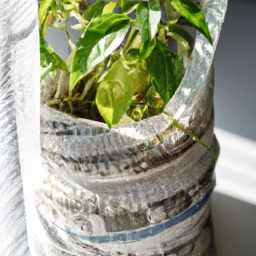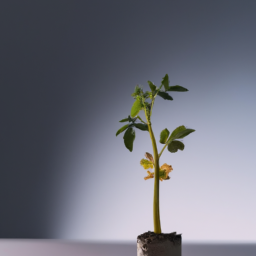
Types of Indoor Growing Lights: A Comprehensive Guide
Introduction
Welcome to our comprehensive guide on the various types of indoor growing lights. If you are an avid gardener or interested in growing plants indoors, choosing the right lighting system is crucial for the success of your plants. In this guide, we will explore the different types of indoor growing lights available in the market, their pros and cons, and how to choose the best option for your specific needs.
1. Fluorescent Lights
Fluorescent lights are a popular choice among indoor gardeners due to their affordability and versatility. They come in two main types: compact fluorescent lights (CFLs) and T5 fluorescent lights.
CFLs are energy-efficient and emit a full spectrum of light, making them suitable for various stages of plant growth. They are available in different wattages and color temperatures, allowing you to customize the lighting for specific plants.
T5 fluorescent lights, on the other hand, are more powerful and provide a higher light output compared to CFLs. They are commonly used in commercial setups or for growing plants that require intense lighting, such as seedlings or young plants.
Pros of Fluorescent Lights:
- Cost-effective and readily available
- Energy-efficient
- Produce less heat, reducing the risk of plant damage
- Can be used for a wide range of plants
Cons of Fluorescent Lights:
- Not suitable for flowering or fruiting plants that require high-intensity lighting
- May need multiple fixtures to cover a larger growing area
2. High-Intensity Discharge (HID) Lights
HID lights are known for their high light output and are commonly used in professional indoor gardening setups. There are two main types of HID lights: metal halide (MH) and high-pressure sodium (HPS) lights.
MH lights emit a bluish-white light spectrum, which is ideal for the vegetative stage of plant growth. They promote compact and lush foliage development. On the other hand, HPS lights emit a reddish-orange spectrum, which is suitable for the flowering and fruiting stage of plants.
HID lights require a ballast to regulate the electrical current and provide the necessary voltage to start and operate the lamps.
Pros of HID Lights:
- Provide high light output, suitable for all stages of plant growth
- Efficiently penetrate the plant canopy, promoting better growth
- Can cover larger growing areas with fewer fixtures
Cons of HID Lights:
- Generate a significant amount of heat, requiring proper ventilation and cooling
- Require additional equipment like ballasts
- Consumes more energy compared to other lighting options
3. Light-Emitting Diode (LED) Lights
LED lights have gained popularity in recent years due to their energy efficiency and long lifespan. They are available in various spectrums, allowing growers to tailor the lighting to specific plant requirements.
LED lights produce less heat compared to HID lights, reducing the risk of plant damage. They are also compact and lightweight, making them suitable for smaller growing spaces or vertical gardens.
Modern LED lights often come with advanced features like dimming options, programmable timers, and built-in cooling systems, providing growers with more control over their indoor gardens.
Pros of LED Lights:
- Energy-efficient, resulting in lower electricity bills
- Long lifespan, reducing the need for frequent replacements
- Produce less heat, reducing the risk of plant damage
- Can be customized to provide specific light spectrums for different plant stages
Cons of LED Lights:
- Higher upfront cost compared to other lighting options
- May require additional cooling systems for larger setups
Conclusion
Choosing the right indoor growing lights is essential for the success of your indoor garden. Each type of lighting system has its own pros and cons, so it’s important to consider factors such as your budget, the size of your growing area, and the specific needs of your plants.
Fluorescent lights are a cost-effective option for beginners or small-scale gardens, while HID lights provide high light output for larger setups. LED lights offer energy efficiency and flexibility, making them a popular choice among indoor gardeners.
Remember to research and compare different brands and models before making a purchase. With the right indoor growing lights, you can create an optimal growing environment for your plants and enjoy a thriving indoor garden all year round.
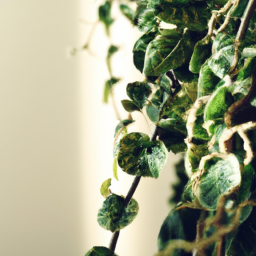
Choosing the Right Indoor Growing Lights for Your Plants
Introduction
Welcome to the ultimate guide on choosing the right indoor growing lights for your plants. Whether you’re a seasoned gardener or just starting out, understanding the importance of proper lighting is crucial for the success of your indoor garden. In this article, we will delve into the various types of indoor growing lights available in the market and help you make an informed decision based on your specific needs and plant requirements.
Indoor growing lights serve as a substitute for natural sunlight, providing the necessary light spectrum for plants to undergo photosynthesis and thrive. With advancements in technology, there are now several options to choose from, each with its own set of advantages and considerations. Let’s explore these options and find the perfect fit for your indoor garden.
Types of Indoor Growing Lights
1. Fluorescent Lights: Fluorescent lights are a popular choice among indoor gardeners due to their affordability and energy efficiency. They come in two main types: compact fluorescent lights (CFLs) and high-output fluorescent lights (HOFLs). CFLs are suitable for small-scale gardens or seedlings, while HOFLs provide higher intensity and are ideal for larger plants or flowering stages.
2. LED Lights: Light-emitting diode (LED) lights have gained immense popularity in recent years due to their versatility and energy efficiency. LED lights are available in various spectrums, including red, blue, and full spectrum. They offer precise control over the light spectrum, allowing you to tailor the lighting conditions to each growth stage of your plants.
3. High-Intensity Discharge (HID) Lights: HID lights are known for their high light output and are commonly used in commercial indoor gardens. There are two types of HID lights: metal halide (MH) and high-pressure sodium (HPS). MH lights emit a bluish light spectrum, ideal for vegetative growth, while HPS lights emit a reddish spectrum, promoting flowering and fruiting.
Considerations for Choosing Indoor Growing Lights
1. Light Spectrum: Different plants have varying light requirements at different growth stages. It’s essential to choose a light source that offers the appropriate spectrum for your plants. For instance, blue light promotes vegetative growth, while red light stimulates flowering and fruiting. Full spectrum lights provide a balanced combination of both.
2. Light Intensity: Light intensity is measured in terms of foot-candles or lux. Leafy greens and herbs typically require around 200-400 foot-candles, while flowering plants may need 800-1500 foot-candles. Consider the size of your growing area and the light requirements of your plants to determine the appropriate light intensity.
3. Energy Efficiency: Since indoor growing lights will be running for extended periods, it’s important to choose energy-efficient options to minimize electricity costs. LED lights are known for their energy efficiency, consuming significantly less power compared to fluorescent or HID lights.
Installation and Maintenance Tips
1. Placement: Position your indoor growing lights at an optimal height and distance from your plants. This will vary depending on the light type and the growth stage of your plants. Ensure that the lights are evenly distributed to prevent any shading or uneven growth.
2. Light Duration: Most plants require 12-16 hours of light per day for optimal growth. Use a timer to automate the light schedule and maintain consistent lighting conditions. Be mindful of any specific light requirements for certain plants, as some may benefit from longer or shorter light durations.
3. Regular Maintenance: Keep your indoor growing lights clean and free from dust or debris. Regularly inspect the bulbs or diodes for any signs of damage or wear. Replace any faulty components promptly to ensure the longevity and effectiveness of your lighting system.
Conclusion
Choosing the right indoor growing lights is a crucial step towards creating a thriving indoor garden. Consider the specific light spectrum, intensity, and energy efficiency requirements of your plants to make an informed decision. Whether you opt for fluorescent lights, LED lights, or HID lights, ensure proper installation and maintenance to maximize the growth potential of your plants. Happy gardening!
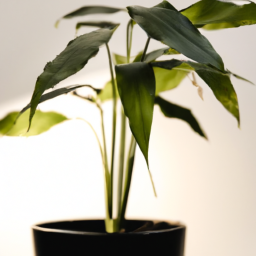
The Benefits of Using LED Lights for Indoor Plant Growth
Indoor gardening has gained significant popularity in recent years, allowing individuals to grow their favorite plants and herbs all year round, regardless of the outdoor climate. One crucial factor for successful indoor gardening is providing adequate lighting to mimic natural sunlight. Traditional lighting options, such as fluorescent and incandescent bulbs, have been widely used in the past. However, LED lights have emerged as the preferred choice for indoor plant growth due to their numerous benefits.
Energy Efficiency
LED lights are highly energy-efficient, making them an excellent choice for indoor gardening. Compared to traditional lighting options, LEDs consume significantly less electricity, resulting in lower energy bills. This energy efficiency is achieved due to the way LEDs produce light. Unlike other bulbs that emit light in all directions, LEDs emit light in a specific direction, ensuring maximum utilization of energy. This targeted light emission not only reduces energy waste but also allows plants to receive a higher intensity of light, promoting healthier growth.
Furthermore, LED lights produce very little heat compared to other lighting options. This is beneficial for indoor gardening as excessive heat can damage plants. With LED lights, the risk of burning or overheating your plants is significantly reduced, providing a more controlled and optimal environment for their growth.
In addition to energy efficiency, LED lights have a longer lifespan than traditional bulbs. On average, LEDs can last up to 50,000 hours, while incandescent bulbs only last around 1,000 hours. This extended lifespan not only saves money on replacement costs but also reduces environmental waste, making LED lights a sustainable choice for indoor gardening.
Customizable Light Spectrum
Another significant advantage of using LED lights for indoor plant growth is the ability to customize the light spectrum. Different plants have varying light requirements at different stages of growth. LED lights can be tailored to emit specific wavelengths of light, allowing gardeners to provide the ideal lighting conditions for their plants.
Plants primarily absorb light in the red and blue spectrums. Red light promotes flowering and fruiting, while blue light stimulates vegetative growth. By adjusting the ratio of red to blue light, gardeners can optimize plant growth and development. Some LED lights even offer full-spectrum options, which mimic natural sunlight and provide a balanced combination of red, blue, and other wavelengths necessary for overall plant health.
Additionally, the ability to control the light spectrum with LED lights allows for more efficient energy usage. By providing only the necessary wavelengths, less energy is wasted on producing light that plants do not require, resulting in more cost-effective and environmentally friendly indoor gardening.
Compact Design and Low Maintenance
LED lights are known for their compact design, making them ideal for indoor gardening setups where space is often limited. The small size of LED fixtures allows for more flexibility in arranging the lights to ensure even coverage and maximum light absorption by the plants.
Furthermore, LED lights require minimal maintenance compared to other lighting options. Traditional bulbs often need frequent replacements, which can be time-consuming and costly. LED lights, on the other hand, have a longer lifespan and do not require frequent bulb changes, reducing maintenance efforts and expenses.
LED lights are also durable and resistant to breakage, making them more reliable in the long run. Their solid-state construction and lack of fragile components make them less prone to damage from vibrations or impacts, ensuring consistent and uninterrupted lighting for indoor plants.
In conclusion, LED lights offer numerous benefits for indoor plant growth. Their energy efficiency, customizable light spectrum, compact design, and low maintenance make them the preferred choice for indoor gardeners. By investing in LED lights, you can create an optimal environment for your plants to thrive and enjoy the rewards of successful indoor gardening.
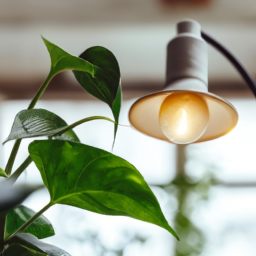
How to Properly Set Up Indoor Growing Lights for Maximum Efficiency
Introduction
Indoor growing lights are an essential tool for any indoor gardener. They provide the necessary light spectrum and intensity to support plant growth and ensure maximum efficiency. In this guide, we will walk you through the step-by-step process of setting up indoor growing lights for optimal results.
Choosing the Right Indoor Growing Lights
Before diving into the setup process, it’s crucial to select the right indoor growing lights for your specific needs. Here are a few factors to consider:
Light Spectrum
The light spectrum plays a significant role in plant growth. Different stages of plant development require different light spectrums. For vegetative growth, lights with a higher blue spectrum are ideal, while lights with a higher red spectrum are suitable for flowering and fruiting stages. Full-spectrum lights that cover the entire range are also available and can be used throughout the plant’s life cycle.
When choosing lights, look for options that provide adjustable spectrums or consider using a combination of lights to meet your plants’ specific requirements.
Light Intensity
The intensity of light is measured in terms of PAR (Photosynthetically Active Radiation). Different plants have different light intensity requirements. Leafy greens, herbs, and seedlings generally require lower light intensity, while flowering plants and fruiting vegetables need higher intensities.
Ensure that the lights you choose can provide the required intensity for your plants. It’s recommended to consult the manufacturer’s guidelines or seek advice from experts to determine the appropriate light intensity for your indoor garden.
Energy Efficiency
Energy efficiency is a crucial consideration for indoor growing lights, as they will be running for extended periods. Look for lights that are labeled as energy-efficient or have a high PAR/Watt ratio. LED lights are known for their energy efficiency and are a popular choice among indoor gardeners.
Setting Up Indoor Growing Lights
Now that you have chosen the right indoor growing lights, it’s time to set them up properly. Follow these steps for maximum efficiency:
Step 1: Determine the Hanging Height
The hanging height of your lights plays a crucial role in providing the right amount of light to your plants. Too close, and the plants may experience heat stress or light burn. Too far, and they may not receive enough light for optimal growth.
As a general rule of thumb, start by hanging the lights 12-18 inches above the canopy for high-intensity lights and 24-36 inches for lower-intensity lights. Monitor your plants closely and adjust the height accordingly based on their response.
Step 2: Ensure Proper Light Distribution
Even light distribution is essential to prevent uneven growth and ensure all plants receive sufficient light. To achieve this:
– Position the lights parallel to the plant rows, ensuring each row receives equal light exposure.
– If using multiple lights, space them evenly to avoid concentrated light in specific areas.
– Consider using reflectors or light diffusers to scatter light and minimize shadows.
Step 3: Set Up Light Timers
Plants require a specific light-dark cycle for healthy growth. Setting up light timers helps automate this process and ensures consistency. Follow these guidelines:
– Determine the appropriate photoperiod (light duration) for your plants. Generally, 12-16 hours of light per day is suitable for most plants.
– Set the timers to turn on and off the lights at the desired intervals. It’s recommended to mimic natural daylight cycles for best results.
– Regularly monitor and adjust the light duration based on your plants’ specific requirements and growth stage.
Conclusion
Properly setting up indoor growing lights is crucial for achieving maximum efficiency in your indoor garden. By choosing the right lights, determining the hanging height, ensuring proper light distribution, and setting up light timers, you can create an optimal environment for your plants to thrive. Remember to closely monitor your plants’ response and make adjustments as needed. Happy growing!
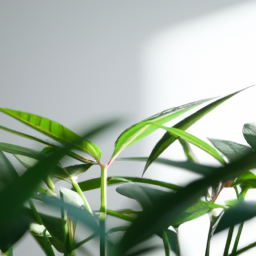
Common Mistakes to Avoid When Using Indoor Growing Lights
Indoor growing lights are essential for successful indoor gardening. They provide the necessary light spectrum to support plant growth and development. However, many beginners make common mistakes that can hinder the effectiveness of these lights. In this guide, we will discuss the most common mistakes to avoid when using indoor growing lights, ensuring that your plants thrive and flourish.
1. Insufficient Light Intensity
One of the most common mistakes is not providing enough light intensity for your plants. Different plants have varying light requirements, and it is crucial to understand the specific needs of your plants. Insufficient light can lead to stunted growth, weak stems, and poor flowering or fruiting.
When selecting indoor growing lights, consider the light intensity or brightness they provide. This is typically measured in lumens or lux. Leafy greens and herbs require around 2000-3000 lumens per square foot, while flowering plants and fruiting vegetables may need up to 5000 lumens per square foot. Ensure that your light source can meet the specific requirements of your plants to promote healthy growth.
Additionally, it is important to position the lights at an appropriate distance from the plants. If the lights are too far, the intensity may decrease, while placing them too close can cause heat stress or burn the leaves. Refer to the manufacturer’s guidelines or consult a horticulture expert for the recommended distance for your specific light source.
2. Incorrect Light Spectrum
Plants require different light spectrums at various stages of growth. The two primary spectrums are the blue spectrum (400-500nm) and the red spectrum (600-700nm). The blue spectrum promotes vegetative growth, while the red spectrum enhances flowering and fruiting.
A common mistake is using the wrong light spectrum or not providing a balanced combination of blue and red lights. If you only use blue lights during the flowering stage or red lights during the vegetative stage, your plants may not develop optimally. It is crucial to provide the appropriate light spectrum at each stage to support healthy growth and maximize yields.
Many indoor growing lights now come with adjustable spectrums or full-spectrum capabilities. These lights provide a balanced combination of blue and red lights, mimicking natural sunlight. Investing in such lights can greatly benefit your plants and help avoid spectrum-related issues.
3. Inadequate Light Duration
Proper light duration is essential for plant growth. Many beginners make the mistake of not providing enough light or leaving the lights on for too long. Both scenarios can negatively impact plant health and development.
Most plants require around 12-16 hours of light per day during the vegetative stage and 8-12 hours during the flowering stage. However, these durations can vary depending on the specific plant species. It is crucial to research and understand the light requirements of your plants to ensure optimal growth.
Using a timer is highly recommended to automate the light duration. This ensures consistent and appropriate lighting for your plants, even if you are not available to manually control the lights. Set the timer according to the specific needs of your plants, and monitor their growth to make any necessary adjustments.
4. Lack of Proper Ventilation
Another common mistake is neglecting proper ventilation when using indoor growing lights. Lights generate heat, and without adequate ventilation, the temperature can rise to levels that are harmful to plants.
Ensure that your grow space has proper airflow and ventilation systems in place. This helps maintain a suitable temperature and humidity level, preventing heat stress and excessive moisture buildup. Exhaust fans, intake vents, and oscillating fans can aid in creating a well-ventilated environment for your plants.
Monitoring the temperature and humidity levels regularly is essential. Aim for a temperature range of 70-85°F (21-29°C) during the day and slightly cooler temperatures at night. Maintaining proper ventilation not only prevents heat-related issues but also reduces the risk of pests and diseases.
5. Neglecting Light Maintenance
Lastly, neglecting light maintenance is a mistake that can compromise the effectiveness of your indoor growing lights. Over time, lights can become less efficient, and their output may decrease. It is important to regularly clean and inspect your lights to ensure optimal performance.
Dust and debris can accumulate on the light fixtures, reducing their light output. Clean the lights periodically using a soft cloth or a gentle brush. Be sure to turn off the lights before cleaning and avoid using harsh chemicals that may damage the fixtures.
Additionally, check for any damaged or malfunctioning parts and replace them promptly. Bulbs or LEDs that are nearing the end of their lifespan should also be replaced to maintain consistent light quality. Keeping your lights in good condition will ensure that your plants receive the maximum benefit and grow to their full potential.
Avoiding these common mistakes when using indoor growing lights can significantly improve the success of your indoor garden. Remember to provide sufficient light intensity, use the correct light spectrum, ensure adequate light duration, maintain proper ventilation, and regularly maintain your lights. By following these guidelines, you will create an optimal environment for your plants to thrive and enjoy a bountiful harvest.
Frequently Asked Questions (FAQ)
1. What are indoor growing lights?
Indoor growing lights are artificial light sources used to provide the necessary light spectrum for plants to grow indoors. They mimic natural sunlight and are commonly used in indoor gardening or hydroponics.
2. Why do I need indoor growing lights?
Indoor growing lights are essential when growing plants indoors because they provide the necessary light energy for photosynthesis. Without proper lighting, plants may not receive adequate light for healthy growth and development.
3. What types of indoor growing lights are available?
There are various types of indoor growing lights available, including fluorescent lights, LED lights, and high-intensity discharge (HID) lights. Each type has its own advantages and is suitable for different stages of plant growth.
4. How do fluorescent lights compare to LED lights for indoor growing?
Fluorescent lights are more affordable and commonly used for seedlings and young plants. LED lights, on the other hand, are energy-efficient, produce less heat, and can be customized to provide specific light spectrums for different plant growth stages.
5. What is the ideal light spectrum for indoor growing?
The ideal light spectrum for indoor growing includes blue light (450-500 nm) for vegetative growth and red light (620-700 nm) for flowering and fruiting stages. Some lights also include additional spectrums like UV and IR for enhanced plant growth.
6. How far should indoor growing lights be from the plants?
The distance between the plants and the lights depends on the type of light and the plant’s growth stage. As a general guideline, fluorescent lights should be placed 6-12 inches away, while LED lights can be placed 12-24 inches away to avoid burning the plants.
7. How long should I keep the indoor growing lights on?
The recommended light duration varies depending on the plant species and growth stage. Most plants require 12-16 hours of light per day during the vegetative stage and 8-12 hours during the flowering stage. It’s important to provide a dark period for plants to rest as well.
8. Can I use indoor growing lights for any type of plant?
Yes, indoor growing lights can be used for a wide variety of plants, including herbs, vegetables, flowers, and even some fruit-bearing plants. However, it’s important to consider the specific light requirements of each plant species for optimal growth.
9. Do indoor growing lights consume a lot of electricity?
LED lights are known for their energy efficiency and consume less electricity compared to other types of indoor growing lights. They produce less heat as well, reducing the need for additional cooling systems. However, it’s always a good idea to check the power consumption specifications of the lights you choose.
10. Can indoor growing lights replace natural sunlight completely?
While indoor growing lights can provide the necessary light spectrum for plant growth, they cannot completely replace natural sunlight. Sunlight contains a broader spectrum of light and provides additional benefits to plants. However, indoor growing lights can be used effectively to supplement natural light or in situations where sunlight is limited.
Dr. Olivia Green is a botanist with over two decades of experience in indoor plant cultivation. She holds a Ph.D. in Plant Biology and has dedicated her career to researching plant behavior in controlled environments. Dr. Green is passionate about helping plant enthusiasts master the art of indoor gardening through her extensive knowledge and practical insights.

